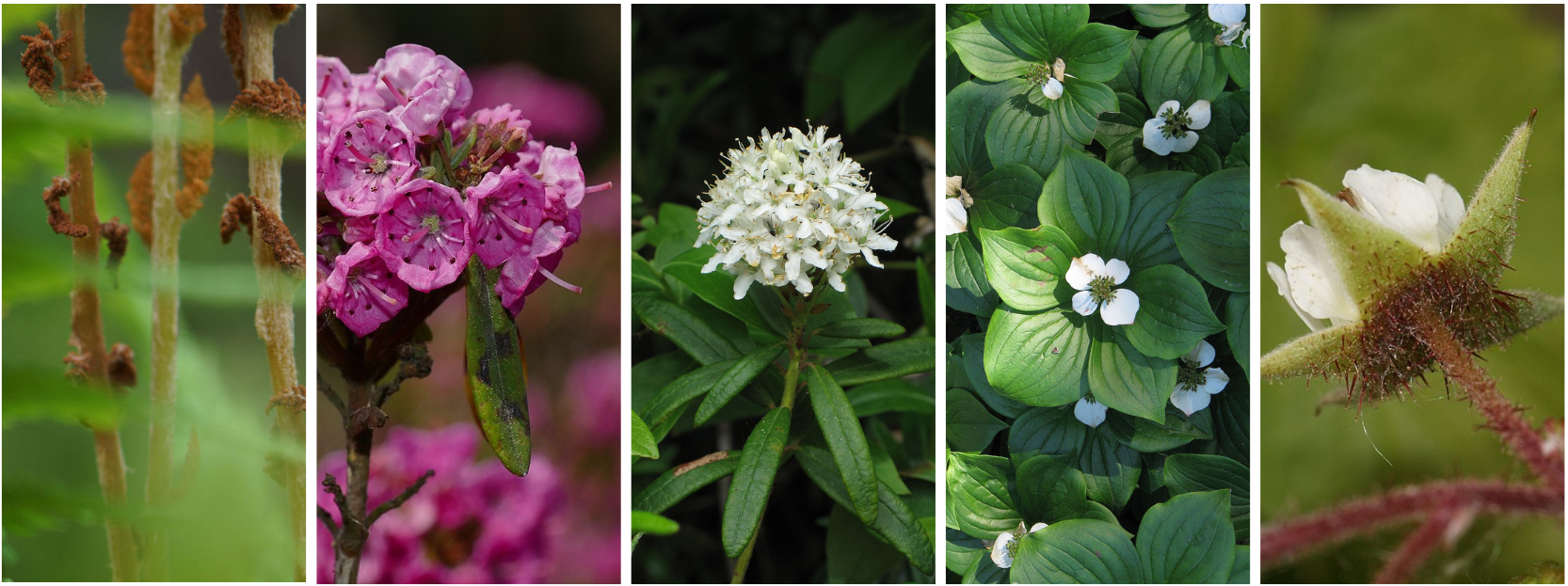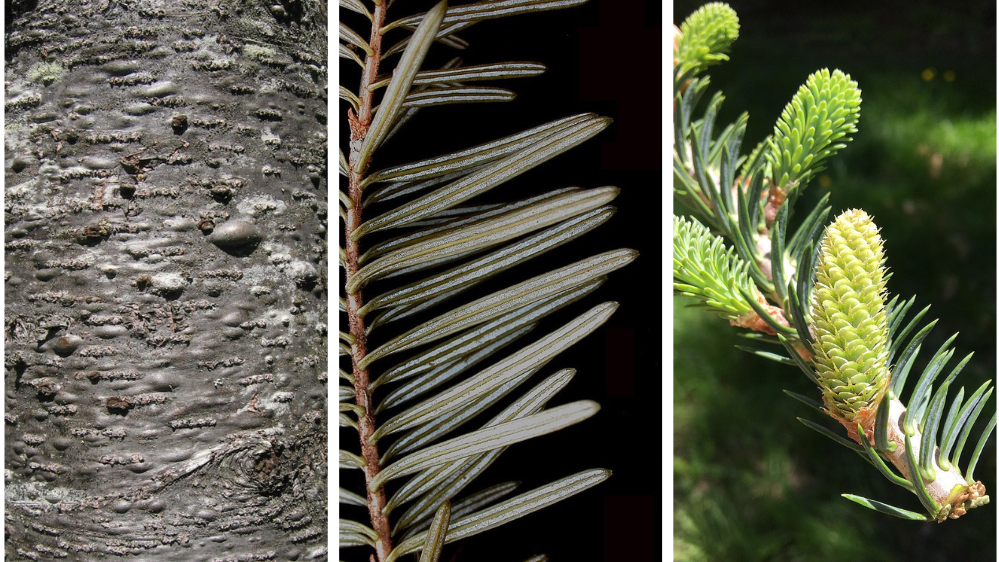Step into much of the Canadian wilderness and you’ll likely come across a balsam fir (Abies balsamea). With its distinctive cone shape and vibrant green needles, this conifer is a staple of the Canadian landscape, stretching from Newfoundland to Alberta. It’s not just its beauty that makes it special – balsam fir has many uses as a traditional medicine, emergency food, and in bushcraft.
In this post, I’ll talk in-depth about this tree, how to identify it, explore its human uses, and uncover some of the ways it contributes to the ecosystem.

Identifying Balsam Fir (Abies balsamea)
When it comes to identifying balsam fir, there are several key characteristics to look for. The tree can grow up to 40-60 feet in height and prefers cold winters and moist forests. It has a relatively short lifespan, usually around 80-100 years. Balsam fir has a symmetrical and steeple-shaped appearance, which makes it a popular choice among Christmas tree farmers.
Balsam firs are commonly found growing alongside other tree species such as yellow birch, red maple, black spruce, and red spruce. They have a knack for establishing themselves and growing under the shade of larger trees. You’ll also find they associate closely with plants such as Labrador-tea, Canada yew, American raspberry, sheep-laurel, bunchberry, painted trillium, Canada mayflower, cinnamon fern, and bluebead lily.

Balsam fir needles are flattish in shape, about 5/8 to 1.5 inches in length, and have slightly notched ends. On the upper side, the needles are a waxy green. On the lower side, they have two white lines running along them. These white lines are the leaves’ stomata (pores) and are responsible for plant respiration and transpiration.
Another identifying feature of balsam fir is its cones, which the tree begins to produce at around 15-20 years of age. These cones are 1-3 inches in length and are deep purple or green in colour, becoming brown as they age. Balsam fir trees have uneven cone production. Some years they produce cones in abundance and others with scarcity.
Young trees have smooth bark. As the tree ages, the bark becomes rough and grey-brown in colour. You may also notice resin-filled blisters covering the trunk. The tree’s resin contains essential oils and has a strong, pleasant pine-like scent. There is some debate about the function of these resinous blisters. Some scientists think that this is the tree’s way of getting rid of cellular waste. Others say the resin acts to protect the tree from pests and pathogens. Likely, it is some combination of both.
The twigs of balsam fir are smooth, which can help to differentiate it from other similar-looking species like hemlock trees, which have rough twigs.

Wildlife Uses
Balsam fir plays an important role in the ecosystem. The tree provides food, shelter, and nesting sites for a variety of animals. Moose rely heavily on the tree as a winter food. Mice, voles, black bear, red squirrels, spruce grouse and ruffed grouse also eat parts of the tree, though more sparingly.
The dense branches of balsam fir provide cover for white-tailed deer, especially in harsh weather conditions. Snowshoe hare and birds, such as the Bicknell’s thrush, also use balsam fir for nesting sites. Beaver sometimes use the wood in the construction of dams.
Medicinal Uses
Traditionally, people have used balsam fir as a medicine for wounds. Its resin is said to have antiseptic and pain-relieving properties. For these reasons, people have made topical salves from balsam fir resin, although it can cause dermatitis in some individuals and may irritate mucous membranes.
The Cree boil balsam boughs to purify indoor air and create a paste from the resin to treat cuts, burns, and snow blindness. They also use the tree to treat headaches, pain, arthritis and other ailments. You can see a demonstration of how to use and prepare balsam fir for these purposes here. The Iroquois (Haudenosaunee) use balsam fir needles and twigs to make a tea that treat colds, coughs, and asthma.

Emergency Food Source
In a survival situation, you can use balsam fir as an emergency food source. Consume the resin and cambium (the soft inner bark) for a few calories, although it’s not particularly palatable. Alternatively, you can dry and grind the cambium into flour.
Bushcraft Uses
Bushcrafters use balsam fir boughs to construct shelters, a practice borrowed from Indigenous cultures. The boughs help insulate from the cold ground and can create a water-resistant roof for a shelter. The wood of the balsam fir is great for making bowdrill sets and the tree’s resin can act as an adhesive. In addition, resin-filled knots of the tree can be used as torches.
Further Reading
5 Edible Trees and Some of their Medicinal Qualities
Maple Trees and their Edible Qualities
Acadian Forest: History, Species, and Biodiversity
Tree Lungwort (Lobaria pulmonaria)
Sources
Jamie Simpson. 2015. Restoring the Acadian Forest: A Guide to Forest Stewardship for Woodlot Owners in Eastern Canada (2nd edition). Halifax: Nimbus Publishing.
Steve Foster and James A. Duke. 2014. Peterson Field Guide to Medicinal Plants and Herbs of Eastern and Central North America (3rd edition). New York: Mifflin Harcourt Publishing Company.
Lee Allen Peterson. 1977. Peterson Field Guides: Edible Wild Plants Eastern/Central North America. New York: Mifflin Harcourt Publishing Company.
George A. Petrides and Janet Wehr. 1998. Peterson Field Guides: Eastern Trees. New York: Mifflin Harcourt Publishing Company.
Russell Burns and Barbara Honkala. 1965. Silvics of North America: Volume 1. Conifers. United States Department of Agriculture.
Michael Snyder. 2013. “What Are Those Blisters On the Bark of Balsam Firs?” Northern Woodlands.
Cree Board of Health and Social Services of James Bay. 2022. “Traditional Medicine: Balsam Fir.”
Disclaimer
Always consult a healthcare practitioner before trying to self-medicate using any kind of plant. This is especially true if you are pregnant or breastfeeding. Be careful to correctly identify plant species.